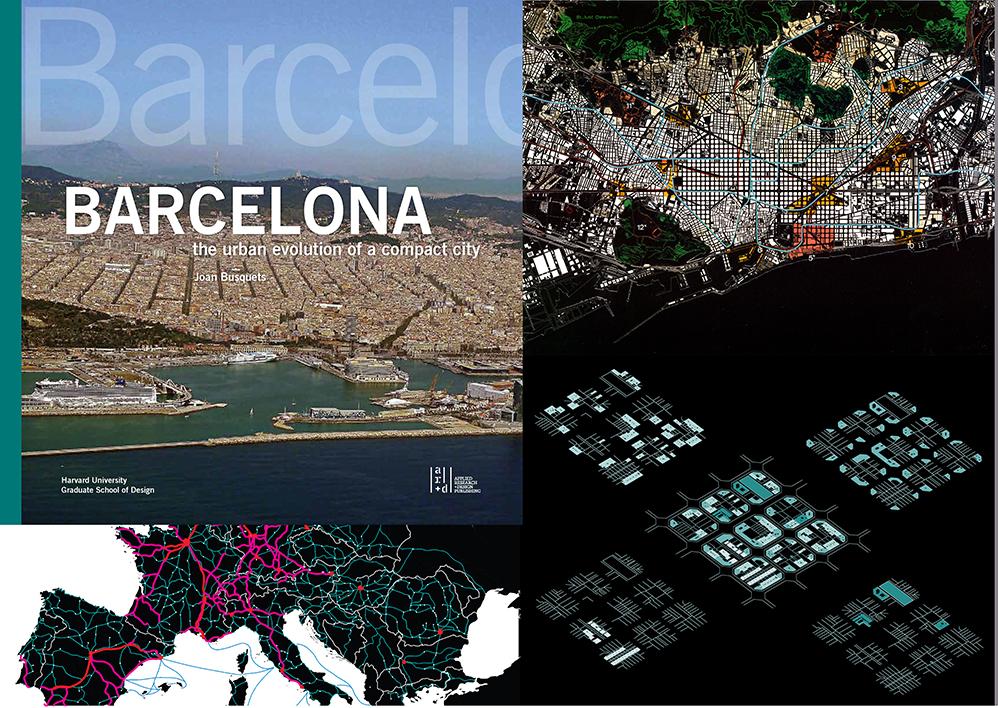Regular City: Construction of Ideas Past and Future

Joan Busquets is an architect, urban planner and chair professor of Urban Planning and Design at the GSD, Harvard University since 2002. Before he was professor at School of Architecture in Barcelona UPC - ETSAB. Founderof LUB Barcelona’s Urban Laboratory). He served as Head of Urban Planning for the Barcelona City Council during the formative years, from 1983 to 1989, and in the preparations for the Barcelona Olympics in 1992, including the New Downtowns for the City program and the improvement process for existing neighbourhoods. Afterwards he had participated in strategic urban planning and design for the European cities of The Hague, Delft, Geneva, Rotterdam, Toledo, Lisbon and Toulouse among others around the world like Singapore, Shanghai, Shenzhen, Ningbo, Harbin, Montrealand Sao Paulo. Awarded with the 2012 Paris Grand Prix Spécial de l'Urbanisme (France) and 2011 Erasmus prize (The Netherlands). Elected full member of the Académie d'Architecture de France (2016).
Busquets has published many books, including: Barcelona: the Urban Evolution of a Compact City (2014), Toledo and its Future (2000), Barcelona, Ciutat Vella: old town with a future(2003), Bringing the Harvard Yards to the River (2004), Six projects for Downtown's Den Haag (2004), Cities X-Lines: A new lens for the urbanisticproject(2007), Cerdà and the Barcelona of the future(2009), “Joan Busquets - City in layers” (2011), World Architecture Magazine nº 272 WA -Designing Urban Architecture: Joan Busquets+BAU/BLAU (2013), Toulouse - Identité et partage du centre-ville (2014), Redesigning Gridded Cities - 4 Volume Set: Hangzhou Underlays, Manhattan Framework, Chicago Boundless and Barcelona Collage(2017), Savannah: Rethinking the multi-scalar capacity of the city project (2018) and Urban Grids: Handbook for Regular City Design (2019).
___________________________________________________________________________
This lecture is founded upon material from exhibition and the upcoming publication “Urban Grids: Handbook for Regular City Design” (ORO Editions, 2019), and is the result of an eight-year research project on “regularity in city design” undertaken at the Harvard University Graduate School of Design. The aim of this research into existing cities and current urban projects is to emphasize the value of reconsidering open forms for city design, with particular attention given to the latent capacities and projective potentials of the urban grid.
The exhibition is organized in four parts. The first part, Atlas of Grid Cities, offers a survey and comparative analysis of gridded cities from across the globe. The second part, Grids through History, presents a historical reading of the regular city through four contrasting arguments. The third part, Emergence of New Urban Grids, presents a selection of key projects and texts from the 20th century, followed by a study of contemporary urban projects at the intermediate scale that exhibit the application of regular logic in their conceptualization and integration into the greater city. The fourth part, Open Forms for City Design, presents four lenses on design tools and concepts that may continue to inform good city design.
The combined graphic display of this research is revealing new positive conditions emerging from the urban grid, presented here as possible paradigms for designing the city of the future.

